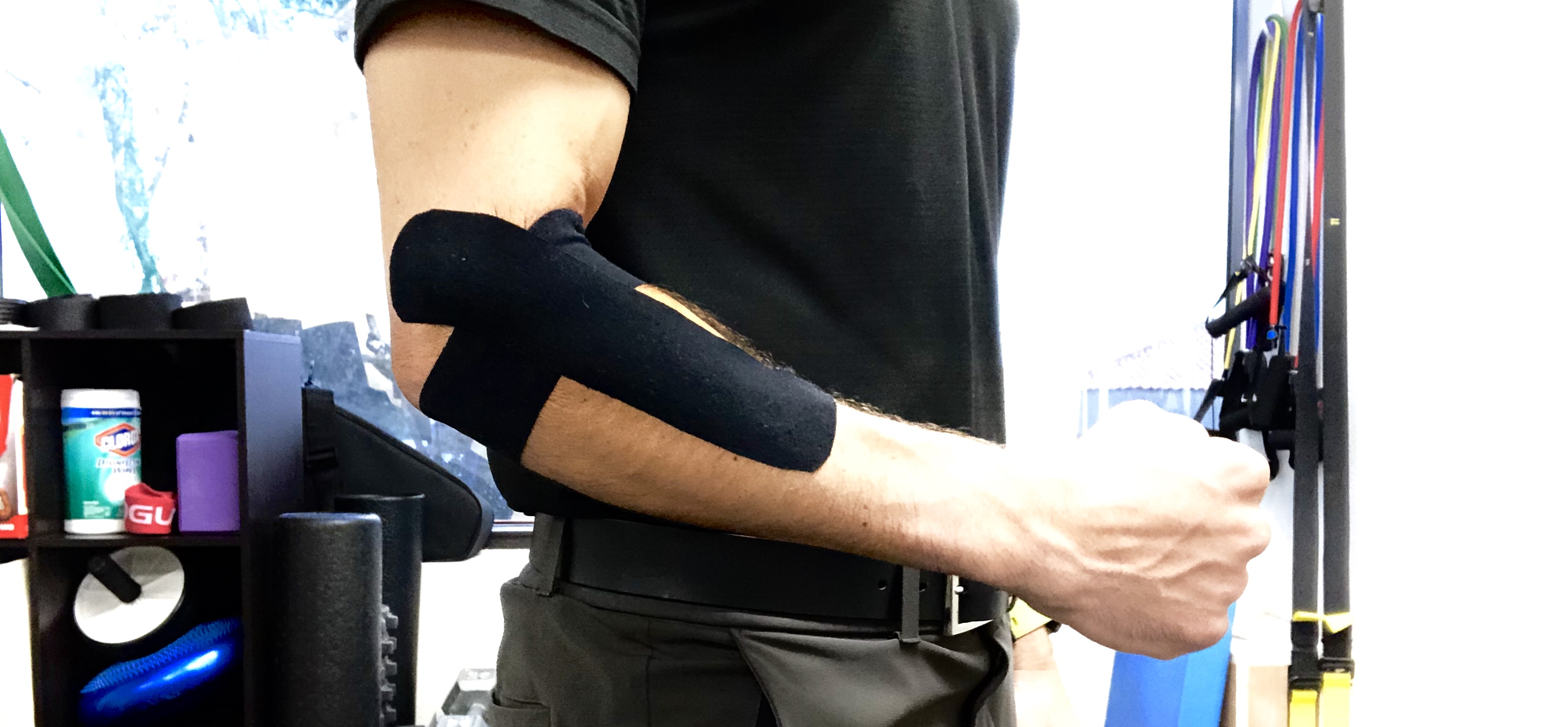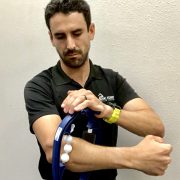Top Tips to Treat Tennis Elbow at Home
Some of the links in this post are affiliate links. We may earn an affiliate commission if you click on a link and purchase an item we recommend. This doesn’t add any additional cost to you, but helps support our business.
When you treat tennis elbow at home it will often help significantly reduce the amount of time this painful condition persists. At home, using a combination of pain relieving gels, taping/strapping, myofascial release, and specific exercises, tennis elbow will improve.
Lateral epicondylitis, or more commonly “Tennis Elbow”, is a painful tendinopathy that affects the outer elbow. It is considered an over-use injury to the extensor muscles of the forearm. The extensor muscles of the forearm connect into a common tendon which inserts into the bony part of the outer elbow. With excessive use the muscles tighten and pull at the outer elbow. Pain can be sharp, achy, and fairly constant.
*The following tips are general recommendations. We highly recommend seeking the advice of a qualified healthcare provider to provide a diagnosis and proper treatment plan.
Common Causes of Tennis Elbow are as follows:
- Playing tennis
- Excessive computer use (typing)
- Rock Climbing
- Repetitive wrenching (mechanics, plumbers)
- Jiu Jitsu
- Excessive weight training
Tips to Treat Tennis Elbow at Home
- Armaid Foam Massage Tool
– The Armaid
is a self myofascial release tool designed to break down tight muscles of the forearm. It comes with a number of different attachments to isolate myofascial adhesions (scar tissue) and break them down. With consistent use, the muscles will begin to regain their normal flexibility which will relieve pressure from the painful elbow insertion. This device, in our opinion, is one of the best devices you can use for treating tennis elbow at home. It is especially useful if you participate in a job/sport that causes a lot of strain into the forearm muscles.
This device is excellent not only for treating tennis elbow at home but for treating “Golfer’s Elbow” which affects the opposite side of the elbow. Watch Dr. Rose demonstrate how to use the Armaidin our video below.
- TheraBand FlexBar, Tennis Elbow Therapy
– The FlexBar
is a flexible bar with grip ridges that allows the bar to twist. The exercise performed is an eccentric load to the extensor muscle group of the forearm. Eccentric loading has been shown in research to strengthen damaged tendons and stretch the muscle fibers. The FlexBar
accomplishes this by having the patient grab the bar with the wrist down, and twist the bar up so the wrist is now up. Slowly release to perform the eccentric contraction. Watch Dr. Rose demonstrate this treatment for tennis elbow at home. It can be a little confusing when you start!
- RockTape
– RockTape is a brand of kinesiology tape. It is designed to support muscle strains, joint sprains, and proper movement mechancis. To treat Tennis Elbow at home, it helps by supporting the extensor muscle group, and the cross strap before the elbow, helps absorb forces from traveling to the painful point on the elbow.

We prefer rock tape for one simple reason, it just seems to stick better than other brands. It can also be used in conjunction with RockTape’s Rock Sauce Hotand RockSauce Ice, depend if you prefer hot or cold sensations. You put RockSauce on first to which helps remove oils from the skin and you get the benefit of pain relieving effects of hot or cold sensations. You can then apply the Rocktape to the same area.
Biofreeze Pain Relief Gel
– Another option to RockSauce. We recommend Biofreeze Pain Relief Gel as it is one of the stronger topical pain relieving gels you can get. It is a product we use daily in our office and can be great for treating tennis elbow at home. Just apply a dime sized portion all around the elbow to help with pain.
- Simien Tennis Elbow Brace– A Tennis Elbow Brace can work well for in a couple different scenarios. First, when Tennis Elbow is affecting day to day activities such as opening doors, cooking, shaking hands. Second, when you still need to train or compete at a high level for a competition. The brace works by compressing the tendon right before the insertion point which is the most painful. When forces travel up the forearm, they get dispersed at the site of the brace, minimizing the amount of force that travels all the way to the painful point. Ideally, we want to treat and work tennis elbow to get rid of the symptoms, but this works well to treat tennis elbow at home when dealing with pain.
- Muscle Floss AKA Voodoo Floss– Muscle Flossing is a relatively new treatment method for various conditions. It can be a great too to treat Tennis Elbow at home. Muscle flossing works through ischemic compression with rapid blood release into the injured area.
To explain further, you tightly wrap the elastic band around the elbow. You want to the band to be pretty tight to where it is mildly challenging to bend the elbow. For 30-60 seconds, bend then elbow back and forth, and move the wrist up and down. The band restricts blood flow to the area and movement pumps blood out of the area. You then rapidly release the band which releases rapid blood flow to the area.
The idea is, this rapid injection of blood to the injured area will help increase the healing process to the tissue. In the pictures below, you can see the elbow is red due to blood flow after 30 seconds of elbow motion.


Those were the top tips we give to patients to help treat tennis elbow at home. We recommend these tips with in person treatment to help fix tennis elbow effectively and quickly. Countless cases of tennis elbow have been treated in our Mission Valley, San Diego office. We primarily use Active Release Techinque, Graston Technique, exercises and a combination of the above tips to treat tennis elbow at our office. Our office is near the neighborhoods of Pacific Beach, UTC, La Jolla, Clairemont Mesa, Santee, La Mesa, Kensington, North Park and South Park.




